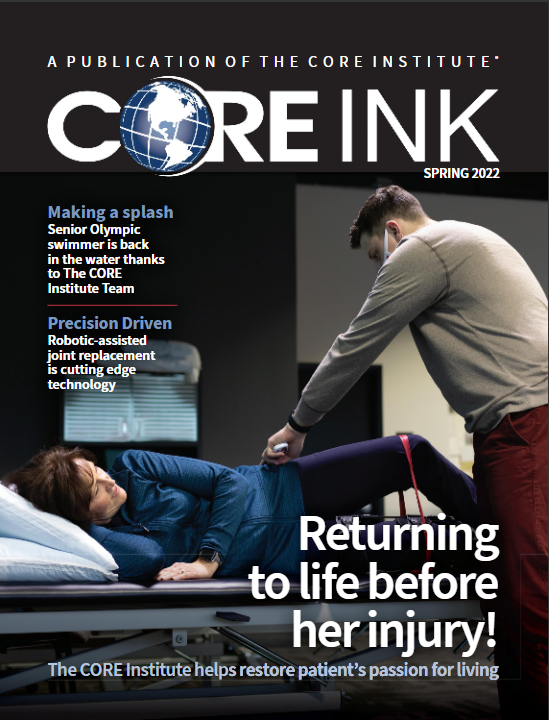To Dr. Jeffrey Holmes of The CORE Institute, something just didn’t look right. The intake paperwork for 35-year-old Elliot Munro indicated an amputation consult. What could have possibly gone wrong, the foot and ankle surgeon wondered, for someone at such a young age to be asking about amputation? Munro, he would eventually learn, brought with him a complex medical history.
After battling leukemia twice, for which he endured chemotherapy, radiation, two bone marrow transplants and extensive steroid medications, Munro was diagnosed with avascular necrosis in his lower body. By interrupting blood flow to the bones, the condition deteriorates bones and joints, and after a recent bout of pain in his right ankle, hospital physicians informed the Mesa, Ariz. father of four that amputation would be his only option.
“That’s what intrigued me the most about this case,” Dr. Holmes said. “This guy shows up … and I’m looking at him, with his wife, who is the biggest advocate you could ask for, and I’m thinking, ‘that’s the only option anyone has given him?’”
Thinking outside the box
With the bone and joint condition, Munro wasn’t particularly surprised when he felt pain in his ankle late last year. The talus, a bone that joins the lower leg and foot, required replacement, but with his bones eroding, the traditional ankle fusion surgery was not an option.
“Because I have avascular necrosis in more than one joint, you can’t fuse dead bone to dead bone. That’s why the prior doctor said the only thing to do is amputate,” Munro said.
Through a Facebook group, Munro’s wife, Stephanie, learned about custom 3D printing capabilities developed for replacement bones and joints. The technology could create a custom talus, allowing for a more traditional ankle replacement to occur. In the procedure, Dr. Holmes would remove dead bone in areas of the foot and lower leg, and then fuse the custom titanium 3D-printed talus to healthy bone.
“We discussed the procedure with another surgeon who’d done it and the engineers at the company that printed the talus. It is a stressful operation, but I thought it could be done,” Dr. Holmes recalled.
Impressive recovery
The surgery was completed successfully on March 19th. After that, Munro spent time in in physical therapy and utilized a special walking boot, crutches and a scooter at times in order to regain his mobility. Today, he has returned to normal function and is able to play football and catch in the yard with his kids.
“If you didn’t know anything about me you’d never know I had the surgery,” Munro said. “I’m so thankful for the support from my wife and Dr. Holmes rallying to get it done.”
Feeling better than ever, the Mesa dad is eager to tell others his story. “There are people who may think amputation is their only option. They need to know this is out there,” he added.
Munro’s story inspired Dr. Holmes as well.
“This definitely opened my eyes to how medicine is changing, and how you have to be open to other treatment modalities and opportunities,” the surgeon noted. “This really could help a lot of people.”
SUBSCRIBE TO CORE INK NEWSLETTER
Sign up to receive stories and information from The CORE Institute, including expertise from our providers and news about the latest technology advancements helping our communities.

